
TRANSLATE

OTHER VERSIONS OF THIS READING
INTRODUCTION
Popular culture – the music, dances, crazes, games, fashion and fads everyone is talking about – is something we are all familiar with now. We hear about things online, on television, and in magazines and movies. But before those means of communication existed, neither did pop culture. There was simply no way to spread ideas to everyone.
The 1920s saw the growth of pop culture in tandem with the growth of radio and the film industry. It is no wonder that we sometimes call the 1920s the Roaring 20s. They were roaring with excitement!
However, is popular culture a good thing? Is all the attention we focus on the latest dance craze, or latest fashion, simply a distraction from more important things in our life like family, school or work?
What do you think? Is pop culture a distraction?
THE GROWTH OF RADIO
Commercial radio in America had humble beginnings. Frank Conrad, an engineer for Westinghouse, set up an amateur radio station above his garage in a Pittsburgh suburb. Since the wireless technology was developed by Guglielmo Marconi in the late 19th Century, thousands of enthusiasts across the world experimented with the new toy. After World War I, Conrad began broadcasting a variety of programming from his station. High school music groups performed, phonograph records were played, and news and baseball scores were reported. Conrad had dramatically improved the transmitter, and soon hundreds of people in the Pittsburgh area were sending requests for airtime. The bosses of Westinghouse knew that Conrad was on to something and convinced him to make his hobby commercially profitable.
On the night of November 2, 1920, Conrad and his Westinghouse associates announced that Warren G. Harding had defeated James Cox to become the next President. The message was heard as far north as New Hampshire and as far south as Louisiana. The federal government granted the call letters KDKA to the Pittsburgh station and a new industry was born. For nearly a year, KDKA monopolized the airwaves. However, competition came fast and furious. By the end of 1922, there were over 500 such stations across the United States. The federal government exercised no regulation over the nascent enterprise, and the result was complete chaos. Stations fought over call letters and frequencies, each trying to out-broadcast the closest competitor. Finally in 1927, Congress created the Federal Radio Commission to restore order.
One of the great attractions to the radio listener was that once the cost of the original equipment was covered, radio was free. Stations made money by selling airtime to advertisers. The possibility of reaching millions of listeners at once had advertising executives scrambling to take advantage of radio. By the end of the decade advertisers paid over $10,000 for an hour of premium time.
THE POWER OF RADIO
The power of radio further sped up the processes of nationalization and homogenization that were previously begun with the wide distribution of newspapers made possible by railroads and telegraphs. Far more effectively than these print media, however, radio created and pumped out American culture onto the airwaves and into the homes of families around the country.
The Radio Corporation of America (RCA) created a new dimension to the venture in 1926. By licensing telephone lines, RCA created America’s first radio network and called it the National Broadcasting Company (NBC). For the first time, citizens of California and New York could listen to the same programming simultaneously. Regional differences began to dissolve as the influence of network broadcasting ballooned. Americans listened to the same sporting events and took up the same fads. Baseball games and boxing matches could now reach those far away from the stadiums and arenas. A mass national entertainment culture was flowering.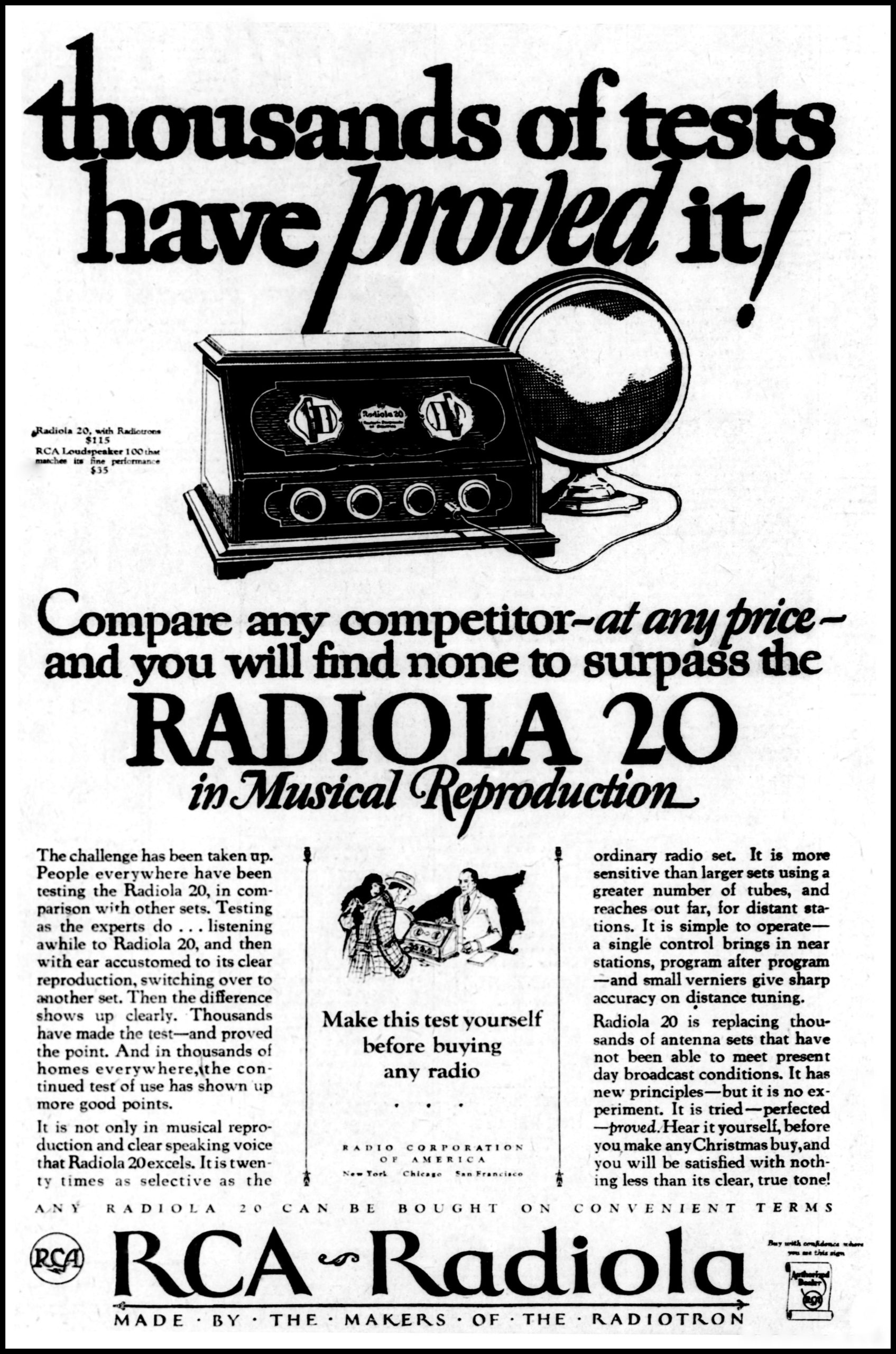 Primary Source: Print Advertisement
Primary Source: Print Advertisement
A 1920s magazine ad for a new RCA radio set. Since receiving radio signals was free, the only cost was the purchase of the radio itself.
Syndicated radio programs like Amos ‘n’ Andy, which began in the late 1920s, entertained listeners around the country. In the case of the popular Amos ‘n’ Andy, it did so with racial stereotypes about African Americans familiar from minstrel shows of the previous century. No longer were small corners of the country separated by their access to information. With the radio, Americans from coast to coast could listen to exactly the same programming. This had the effect of smoothing out regional differences in dialect, language, music, and even consumer taste.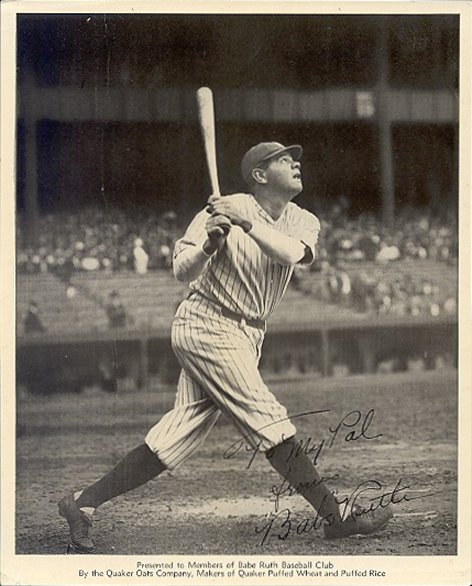 Primary Source: Photograph
Primary Source: Photograph
Babe Ruth was the great baseball hero of the 1920s and 1930s. He played first for the Boston Red Sox and later for the New York Yankees.
Radio also transformed how Americans enjoyed sports. The introduction of play-by-play descriptions of sporting events broadcast over the radio brought sports entertainment right into the homes of millions. Radio helped to popularize sports figures and their accomplishments. Jim Thorpe, who grew up in the Sac and Fox Native American Reservations in Oklahoma, was known as one of the best athletes in the world. He medaled in the 1912 Olympic Games, played Major League Baseball, and was one of the founding members of the National Football League. Other sports superstars were soon household names. In 1926, Gertrude Ederle became the first woman to swim the English Channel. Helen Wills dominated women’s tennis, winning Wimbledon eight times in the late 1920s, whereas “Big Bill” Tilden won the national singles title every year from 1920 to 1925. In football, Harold “Red” Grange played for the University of Illinois, averaging over ten yards per carry during his college career. The biggest star of all was the “Sultan of Swat,” Babe Ruth, who became America’s first baseball hero. He changed the game of baseball from a low-scoring one dominated by pitchers to one where his hitting became famous. By 1923, most pitchers intentionally walked him. In 1924, he hit sixty homeruns.
The radio created the conditions for the first national fads. Without such a method of live and immediate communication, fads could amount only to local crazes. 1920s fads ranged from the athletic to the ludicrous. One of the most popular trends of the decade was the dance marathon. In a typical dance marathon, contestants would dance for 45 minutes and rest for 15. The longest marathons lasted 36 hours or more. Beauty pageants came into vogue. The first Miss America Pageant was staged in Atlantic City in 1921. One of the most bizarre fads was flagpole sitting. The object was simple: be the person who could sit atop the local flagpole for the longest period of time. Fifteen-year-old Avon Foreman of Baltimore set the amateur standard: 10 days, 10 hours, 10 minutes, and 10 seconds.
THE BIRTH OF HOLLYWOOD
The increased prosperity of the 1920s gave many Americans more disposable income to spend on entertainment. As the popularity of moving pictures grew in the early part of the decade, movie palaces, capable of seating thousands, sprang up in major cities. A ticket for a double feature and a live show cost twenty-five cents; for a quarter, Americans could escape from their problems and lose themselves in another era or world. In an era before television, people of all ages attended the movies with far more regularity than today, often going more than once per week. By the end of the decade, weekly movie attendance swelled to ninety million people.
The silent movies of the early 1920s gave rise to the first generation of movie stars. Rudolph Valentino, the lothario with the bedroom eyes, and Clara Bow, the “It Girl” with sex appeal, filled the imagination of millions of American moviegoers. However, no star captured the attention of the American viewing public more than Charlie Chaplin. This sad-eyed tramp with a moustache, baggy pants, and a cane was the top box office attraction of his time.
In 1927, the world of the silent movie began to wane with the New York release of the first talkie: The Jazz Singer. The plot of this film, which starred Al Jolson, told a distinctively American story of the 1920s. It follows the life of a Jewish man from his boyhood days of being groomed to be the cantor at the local synagogue to his life as a famous and Americanized jazz singer. Both the story and the new sound technology used to present it were popular with audiences around the country. It quickly became a huge hit for Warner Brothers, one of the big five motion picture studios in Hollywood along with Twentieth Century Fox, RKO Pictures, Paramount Pictures, and Metro-Goldwyn-Mayer (MGM).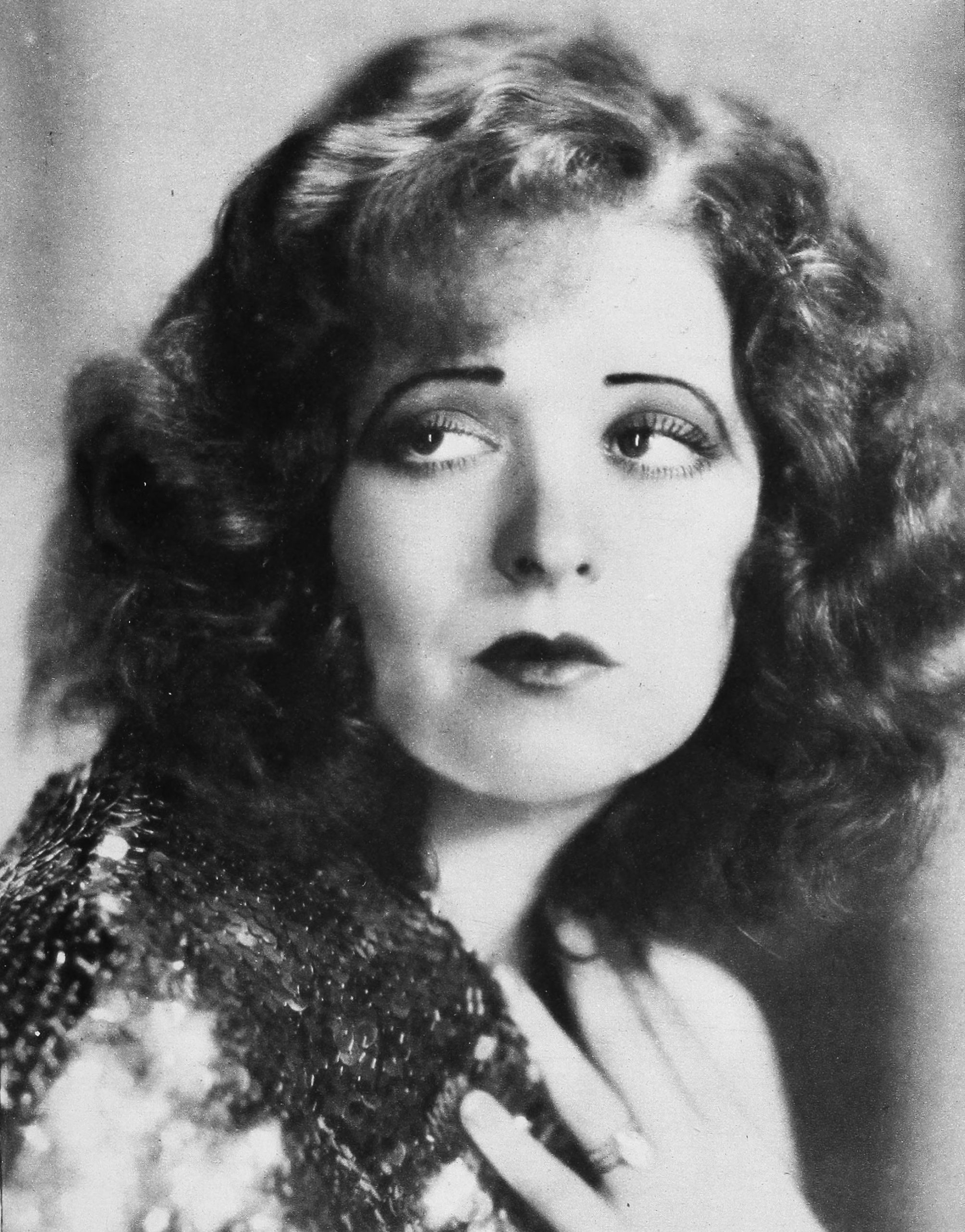 Primary Source: Photograph
Primary Source: Photograph
Clara Bow was the greatest female movie star of the silent era. Her “look” was emulated by girls across America, especially her sad, doe eyes.
Southern California in the 1920s, however, had only recently become the center of the American film industry. Film production was originally based in and around New York, where Thomas Edison first debuted the kinetoscope in 1893. However, in the 1910s, as major filmmakers like D. W. Griffith looked to escape the cost of Edison’s patents on camera equipment, this began to change. When Griffith filmed In Old California (1910), the first movie ever shot in Hollywood, California, the small town north of Los Angeles was little more than a village. As moviemakers flocked to southern California, Hollywood swelled with moviemaking activity. California offered predictable sunshine, and many natural film sets. The ocean, a desert, mountains, palm trees, and forests were all within a day or two’s travel. By the 1920s, the once-sleepy village was home to a majorly profitable innovative industry in the United States.
Animators also found the 1920s favorable for innovation. Short animated films were popular in movie theaters during this time. The late 1920s saw the emergence of Walt Disney and his eponymous studio. Disney’s marquee character, Mickey Mouse, made his debut in “Steamboat Willie” on November 18, 1928, at the Colony Theater in New York City. Mickey would go on to star in more than 120 cartoon shorts, as well as in “The Mickey Mouse Club” and other specials. This jump-started Walt Disney Studios and led to the creation of many other characters in the 1930s. In 1937, Disney released Snow White and the Seven Dwarfs, the first full-length animated movie.
JAZZ
One of America’s great contributions to the world of music was jazz, which originated in the late 1800s and early 1800s as African Americans blended European classical music with African and slave folk songs and the influences of West African culture. Although jazz developed over time, it flourished and gained national attention in the 1920s.
Jazz is an incredibly diverse musical style, but generally is characterized by swing and blue notes, call and response vocals, polyrhythms and improvisation. The immediate precursor to jazz was ragtime, with composers such as Scott Joplin, turning out compositions for piano that had a wide audience at the turn of the century. Jazz first appeared in New Orleans in the early 1900s. Then, after World War I, large numbers of jazz musicians migrated from New Orleans to major northern cities such as Chicago and New York, leading to a wider dispersal of jazz as different styles developed in different cities. As the 1920s progressed, jazz rose in popularity and helped to generate a cultural shift. Because of its popularity in illegal nightclubs where alcohol was sold during Prohibition, and its proliferation due to the emergence of more advanced recording devices, jazz became very popular in a short amount of time, with stars including Duke Ellington, Cab Calloway, and Chick Webb. Several famous entertainment venues such as the Apollo Theater and the Cotton Club came to epitomize the 1920s, and the term the Jazz Age was coined to refer to the decade.
Dances such as the Charleston, developed by African Americans, became popular among different demographics, including among young, urban Whites. With the introduction of large-scale radio broadcasts in 1922, Americans were able to experience different styles of music without physically visiting the jazz clubs of the cities. Through its broadcasts and concerts, the radio provided Americans with a trendy new avenue for exploring unfamiliar cultural experiences from the comfort of their living rooms. Sadly, due to the racial prejudice prevalent at most radio stations, White jazz artists received much more air time than Black artists such as Louis Armstrong, or Jelly Roll Morton.
Several famous female musicians emerged during the 1920s, including Bessie Smith, who garnered attention not only because she was a great singer, but also because she was a Black woman. It was not until the 1930s and 1940s, however, that female jazz and blues singers such as Smith, Ella Fitzgerald, and Billie Holiday were truly recognized and respected as successful artists throughout the music industry. Their persistence paved the way for the female artists of later decades.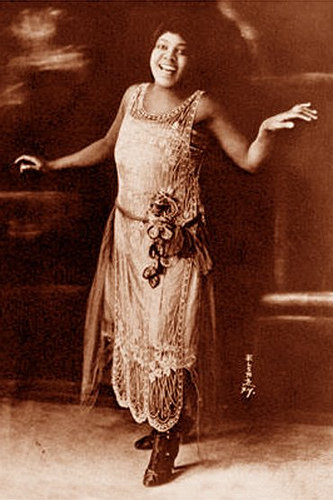 Primary Source: Photograph
Primary Source: Photograph
Bessie Smith was one of the great jazz singers of the early years of the genera.
FLAPPERS
After 1920, the battle for women’s suffrage was finally over. After a 72-year struggle, women had won the precious right to vote. The generations of suffragists that had fought for so long proudly entered the political world. Carrie Chapman Catt and Alice Paul had sacrificed so much to win voting rights. To their dismay, the daughters of the Jazz Age seemed uninterested in these grand causes. As the 1920s roared along, many young women of the age wanted to have fun, and thus were born the flappers.
Flappers were northern, urban, single, young, middle-class women. Many held steady jobs in the changing American economy. The clerking jobs that blossomed in the Gilded Age were more numerous than ever. Increasing phone usage required more and more operators to connect all the calls being placed. The consumer-oriented economy of the 1920s saw a burgeoning number of department stores. Women were needed on the sales floor to relate to the most precious customers — other women. But the flapper was not all work and no play.
By night, flappers engaged in the active city nightlife. They frequented jazz clubs and vaudeville shows. Speakeasies were a common destination, as the new woman of the 1920s adopted the same carefree attitude toward prohibition as her male counterpart. Ironically, more young women consumed alcohol in the decade it was illegal than ever before. Smoking, another activity previously reserved for men, became popular among flappers. With the political field leveled by the 19th Amendment, women sought to eliminate social double standards. Consequently, the flapper was less hesitant to experiment sexually than previous generations. Sigmund Freud had popularized psychology and his declaration that the libido was one of the most natural of human needs seemed to give the green light to explore.
Visually, the flappers rejected the style of their mothers who had embraced the Gibson Girl look. The Gibson Girl was the personification of the feminine ideal of physical attractiveness as portrayed by the pen-and-ink illustrations of artist Charles Dana Gibson. His ideal was of a woman who had an hourglass shape, held in tight with a corset, and wore a dress with a high neck, full-length arms, and extended down to the floor. The Gibson Girl’s hair was pinned up. The flapper rejected everything about the Gibson Girl’s look. The long locks of Victorian women lay on the floors of beauty parlors as young women cut their hair to shoulder length. Hemlines of dresses rose dramatically to the knee. The cosmetics industry flowered as women used make-up in large numbers. Flappers bound their chests and wore high heels. They left corsets behind and embraced straight lines.
Many women celebrated the age of the flapper as a female declaration of independence. Experimentation with new looks, jobs, and lifestyles seemed liberating compared with the socially silenced woman in the Victorian Age of the 1800s. The flappers chose activities to please themselves, not a father or husband. Nevertheless, critics were quick to elucidate the shortcomings of flapperism. The political agenda embraced by the previous generation was largely ignored until the feminist revival of the 1960s. Many wondered if flappers were expressing themselves or acting like men. One thing was certain: Despite the potential political and social gains or losses, the flappers of the 1920s sure managed to have a good time.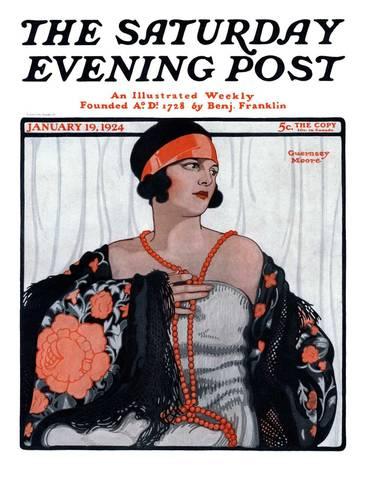 Primary Source: Magazine Cover
Primary Source: Magazine Cover
In 1924, The Saturday Evening Post marked the emergence of the new fashion trends of the decade with an illustration of a flapper on its cover.
TEENAGERS
In the 1800s, the American world consisted of children and adults. Most Americans tried their best to allow their children to enjoy their youth while they were slowly prepared for the trials and tribulations of adulthood. That began to change in the early 1900s. Although child labor practices still existed, many states passed restrictions against such exploitation and the average number of years spent in school for young Americans rose. Parents were waiting longer to push their youngsters into marriage rather than pairing them off at the tender age of 16 or 17. In short, it soon became apparent that a new stage of life — the teenage phase — was becoming a reality in America. American adolescents were displaying traits unknown among children and adults. Although the word teenager did not come into use until decades later, the teenage mindset dawned in the 1920s.
The single greatest factor that led to the emergence of the independent teenager was the automobile. Teens enjoyed a freedom from parental supervision unknown to previous generations. The courtship process rapidly evolved into dating. In earlier times, young boys and girls spent their first dates at home. The boy would meet the girl’s parents, they would have a sitting in the parlor, followed by dinner with the entire family. Later in the evening, the couple might enjoy a few moments alone on the front porch. After several meetings, they could be lucky enough to be granted permission for an unchaperoned walk through town. The automobile shattered these old-fashioned traditions. Dating was removed from the watchful eyes of anxious parents. Teenagers had privacy, and a sexual revolution swept America. Experimentation with sexual behaviors before marriage became increasingly common. Young Americans were now able to look beyond their own small towns at an enlarged dating pool.
Automobile technology led directly to the other major factor that fostered a teenage culture: the consolidated high school. Buses could transport students farther from their homes, leading to the decline of the one-room schoolhouse. Furthermore, Americans realized the potential of a longer education, and states were adding more years to their compulsory schooling laws. As a result, a larger number of teenagers were thrown into a common space than ever before. It was only natural that discussions about commonalties would occur. Before long, schools developed their own cultural patterns, completely unlike the childhood or adult experience. School athletics and extracurricular activities only enhanced this nascent culture. The American teenager was born.
ART
The 1920s was a remarkable period of creativity in many aspects of life, including the world of art and architecture.
Art Deco was a dominant style in design and architecture of the 1920s. Originating in Europe, it spread throughout Western Europe and North America in the mid-1920s and remained popular through the 1930s and early 1940s, waning only after World War II. The name is short for Arts Décoratifs, which came from the Exposition Internationale des Arts Décoratifs et Industriels Modernes (International Exposition of Modern Decorative and Industrial Arts) held in Paris in 1925. The first use of the term is attributed to architect Charles-Edouard Jeanneret-Gris, known as “Le Corbusier.”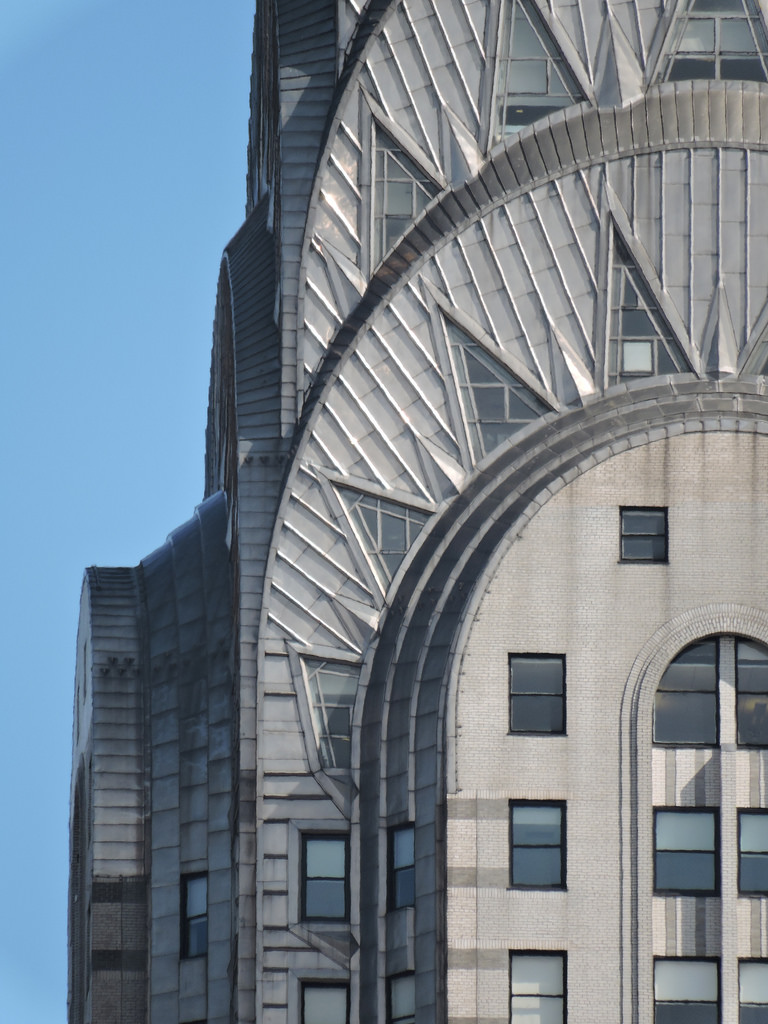 Primary Source: Photograph
Primary Source: Photograph
A close-up photograph of the spire of the Chrysler Building in New York City reveals some of the art deco elements of the design, especially repeated geometric motifs.
The eclectic style emerged from the years between World War I and World War II, often referred to as the interwar period, and combined traditional craft motifs with machine imagery and materials and an embrace of technology. Visually it is characterized by rich colors, lavish ornamentation, and geometric shapes. Artists employing the Art Deco style often drew inspiration from nature and initially favored curved lines, though rectilinear designs became increasingly popular. New York City’s Chrysler Building and the Empire State Building typified the Art Deco style. Other American examples can be found in Chicago, Los Angeles, and San Francisco. The Hoover Dam, constructed between 1931 and 1936 on the border between Nevada and Arizona, includes Art Deco motifs throughout the structure including its water-intake towers and brass elevator doors. Art Deco expanded beyond architecture and found its way into advertising and many other aspects of America’s visual world.
Surrealism was another cultural movement that began in the early 1920s. Surrealist works featured elements of surprise, unexpected juxtapositions, and non sequitur. Spanish painter Salvador Dali, best known for his 1931 work, The Persistence of Memory, was one of the most famous practitioners of Surrealism.
As with many other areas of life, Americans were excited about trying new things, and new ways of seeing the world through art seemed like just another way of experimenting and having a good time.
CONCLUSION
Work and school make things possible. They provide money to feed our families and the necessary education to find good jobs. However, they are not usually the things we look forward to most in life. They are not the spice of life. When we look back at the things that we were most excited about, or look back through the photos in our phones, our favorite memories are friends, dinners, parties, events, shopping and trips. Consider how much time we spend watching online videos. Would those hours be betters spent studying?
Maybe so, or maybe not. Perhaps participating in the culture of the people around us is what makes our life enjoyable. Perhaps popular culture is not a distraction at all. Maybe it is what makes work and school worthwhile.
What do you think? Is pop culture a distraction?
CONTINUE READING

SUMMARY
BIG IDEA: Radio, phonographs and movies made it possible for everyone in America to share the same ideas for the first time.
During the 1920s, as more and more Americans had electricity in their homes and could afford radio sets, radio became an important form of entertainment. For the first time, Americans could all listen to the same radio shows, or listen to live sports broadcasts.
Baseball, football, swimming, tennis, and boxing were popular sports.
Fads such as flagpole sitting, dance marathons, and beauty pageants became popular across the nation.
Hollywood and the movie industry were born in the 1920s. The first movies had no sound, but eventually “talkies” were invented. Just like today, movie stars were fashion idols. The first cartoons also were born in the 1920s, including Walt Disney’s Mickey Mouse.
Jazz was a new American form of music that became popular in the 1920s. Based on old African-American musical traditions, Jazz became popular in the North and among White audiences.
Some middle-class and upper-class young women rejected traditional gender roles and the fashion sense of their mothers and embraced a new style. These flappers went out without chaperones, smoked, drank, danced, and dressed in shocking new ways (at least shocking for the 1920s).
The idea of the teenager was born in the 1920s. High schools added sports, extracurricular activities, and many young Americans waited longer to get married or start working.
New forms of art became popular in the 1920s. Art deco used bold colors, repeated patterns, and geometric shapes. Both artists and architects used this new style. Alternatively, some artists embraced surrealism, which included the painting of fantastic, dream-like images.

VOCABULARY
![]()
PEOPLE AND GROUPS
Guglielmo Marconi: Italian inventor who pioneered radio.
Jim Thorpe: Native American who studied at the Carlisle Indian School, played in the Olympics, and played professional baseball and football.
Gertrude Ederle: First woman to swim the English Channel.
Helen Wills: Women’s tennis champion in the 1920s.
“Big Bill” Tilden: Men’s tennis champion in the 1920s.
Harold “Red” Grange: Star football player in the 1920s.
Rudolph Valentino: Famous movie start of the 1920s. He was known for his sex-appeal.
Babe Ruth: Famous homerun-hitting baseball player of the 1920s and 1930s. He played for the New York Yankee’s and inspired nicknames such as the “Sultan of Swat.”
Clara Bow: Most famous film actress of the silent film era.
Charlie Chaplin: Famous actor, writer, and director of the early film era. He is most famous for playing the tramp.
D. W. Griffith: Director who filmed the first movie in Hollywood.
Walt Disney: Animator who created the first animated films. His character Mikey Mouse debuted in 1928.
Duke Ellington: Early jazz musician who led an orchestra.
Louis Armstrong: Famous jazz musician. He sang and played the trumpet.
Jelly Roll Morton: Pianist and bandleader from New Orleans who claimed to have invented jazz.
Bessie Smith: Great female jazz and blues singers of the 1920s.
Ella Fitzgerald: Great female jazz singer beginning in the 1930s. She was sometimes called the Queen of Jazz.
Billie Holiday: Along with Ella Fitzgerald, one of the great female jazz singers of the 1930s, 1940s and 1950s.
Flappers: Northern, urban, single, young middle-class White women who rejected social expectations, wore makeup, dated, smoked, drank, danced, and dressed in dresses that were short, sleeveless and straight. They are emblematic of the 1920s.
Sigmund Freud: Scientist who popularized psychology. His ideas about sex were shocking but captivated American’s attention.
Gibson Girl: Fashion style popular at the turn of the century that feature long dresses that covered necks, arms and legs. Underneath was a corset, and hair would be tied up, often with a hat. The Flappers of the 1920s rejected this style.
Le Corbusier: French architect who popularized Art Deco style.
Salvador Dali: Spanish artist. He is the most famous artists of the surrealist style.
![]()
KEY IDEAS
Dance Marathon: Dance Marathon: A competition popular in the 1920s in which couples tried to see who could dance for the longest amount of time.
Miss America Pageant: Beauty contest established in the 1920s.
Flagpole Sitting: Fad in the 1920s in which people stat on chairs at the top of flag poles.
Consolidated High School: A form of high school established in the 1920s that was larger because busses carried students in from many neighborhoods.
School Athletics: Sports played by high school students. It was a creation of the 1920s.
Extracurricular Activities: Student clubs, dances, etc. that became a part of school life in the 1920s.
![]()
DOCUMENTS
Hollywood: Neighborhood of Los Angeles that became the center of the new movie industry in the 1920s.
Apollo Theater: Theater in New York that hosted many early jazz musicians.
Cotton Club: Club in New York that hosted many early jazz musicians.
Chrysler Building: Skyscraper in New York City built in the 1920s in the art deco style. It was briefly the tallest building in the world until the Empire State Building a few blocks away was completed.
Empire State Building: Iconic building in New York City. Completed in 1931, it is an excellent example of the art deco style of its time.
![]()
BUSINESSES
Radio Corporation of America (RCA): Early company that sold radio sets to everyday Americans.
National Broadcasting Company (NBC): First broadcasting company in America. It was founded by RCA to produce content for the radios RCA was selling.

TECHNOLOGY
Silent Movies: The first form of movies that did not have sound. They were accompanied by live musicians playing music in the theater.
Talkie: Nickname for the first movies with sound.

THE ARTS
The Jazz Singer: The first film with sound. It started Al Jolson.
Steamboat Willie: The first animated film featuring Mickey Mouse.
Jazz: Musical style created around 1900. It grew out of West African influences, ragtime, slave songs, and European classical influences. First created in New Orleans, it was popularized in the rest of the country during the 1920s. It often features syncopated rhythms and improvisation.
Charleston: Dance craze that swept the nation in the 1920s.
Art Deco: Artistic style popularized in the 1920s and 1930s featuring geometric shapes, repletion, and solid colors.
Surrealism: Art style popular in the 1920s. It features dreamlike images rather than realistic representations. The most famous painter of this style was Salvador Dali.



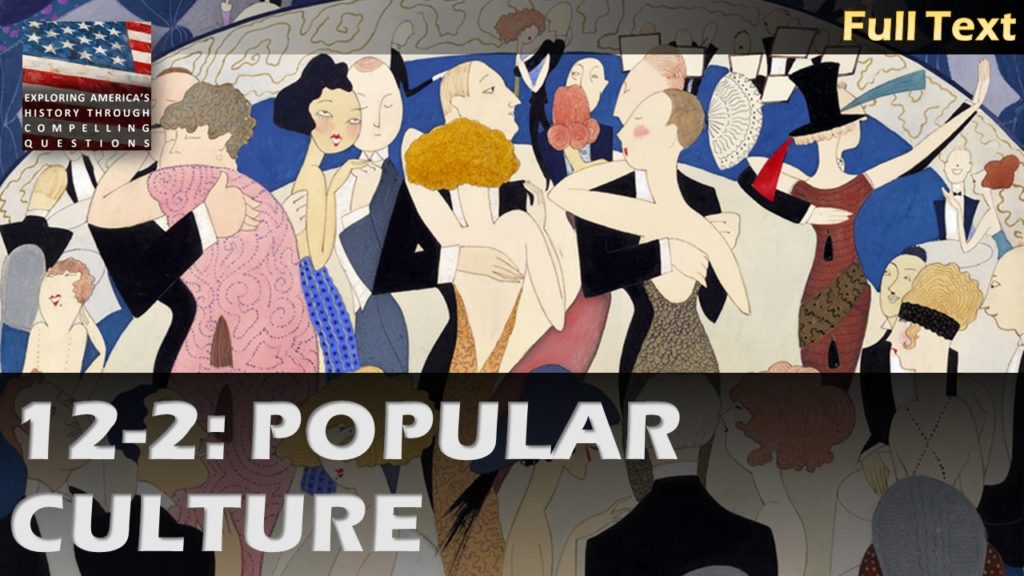
How much did the radio cost?
When flappers were first introduced, what were people’s reactions?
How has pop culture evolved into modern day?
How has jazz still stayed relevant to this day and was it also considered as art back then?
How did parents feel if their teenage daughter wanted to become a flapper or was on the path of becoming one?
Why is it that we still tend to romanticize the idea of the “gibson girl” now with teenagers?
I’m curious about the parent’s point of view during the teenager phase.
Shohei Ohtani modern-day Babe I do not take criticism.
What was Bessie’s best hit song?
What would American history be like without the birth of the radio? Would we still communicate through telegrams?
Was there a correlation in any increasing population numbers with teenagers making use of cars and experimenting away from their parents? There must have been many accidental pregnancies at this time, so were schools adapting to teach their students about these problems?
What was the prohibition?
How did people feel about the flappers back then? Did the flappers have any stereotypes?
What were the requirements and specific age that you could drive during this time?
During the 1920s some states had enacted the age requirements, though the age had not been set during the 1920s some states allowed those that are 16 years of age to be able to obtain licenses. More states would continue to follow with creating an approval age of 16 years old.
Did the sex before marriage anger or provoke the Christians in anyway?
What age did teenagers have to be to drive back in the 1920s? Did they have to have permits and driver’s licenses like how we do today?
I think you can see the similarity of new technology taking over the old kind. Just like how the newspaper was kind of taken over by the radio, the radio was taken over by new technology like our phones and even television. Newspapers seem to be on its last thread as people can publish things online faster than they can release newspapers.
Did the mothers of the flappers ever attempt to put an end to the new actions and lifestyle of their daughters?
Are there more forms of art that typified Art Deco?
In a time filled with so much revolution, what kind of pushback was present?
Was Hollywood as popular before as it is now?
Did any of the teenagers of the 1920s, specifically the women, aspire to be a flapper like the women that were only a few years older than them, or did they want to be like the generation before the flappers?
how did the flappers changes american society? and what were educational trends during this time?
The flappers changed american society in a way of not being the traditional women. They didnt abide by what a “women” should be in their time. They didnt follow behind their moms footsteps. Flappers expressed themselves in a way that they broke the double standards of society. In a way they were role models for women who wanted to be themselves except for the drinking and smoking part.
Was the new type of freedom granted to teenagers the reason why teens began to rebel against their parents in later years?
We can clearly observe that adolescents are becoming a specific group of people in the 1920’s. They also had a considerable amount of freedom with the automobile breaking old-fashioned traditions. So I also wonder if the start of their freedom led to the development of a rebellious attitude towards parents. Was this how the whole common attitude of a teenager came about?
Did the Lost Generation Writers have the idea of Romanticism in their work? They often depicted about the sufferings of people at that time and during World War I, and it explains their feeling about it.
Did older generations approve of the flapper?
If you guys were born in the 1920s, would you guys have become a flapper? As for me, the flapper life sounds really carefree and I think I would admire the liberating lifestyle and their way of rejecting social double standards.
I think I would become a flapper as well. I think that the flapper lifestyle is something that I want in life. The rejection of traditional beauty standards and acting almost as equals their male counterparts. I also admire these women for not only having a steady job but for their immense amount of grit to to do a job that eliminated many social double standards of the day.
Similar to the Flappers, were there any men who also abandon societal norms? If so, what were they called?